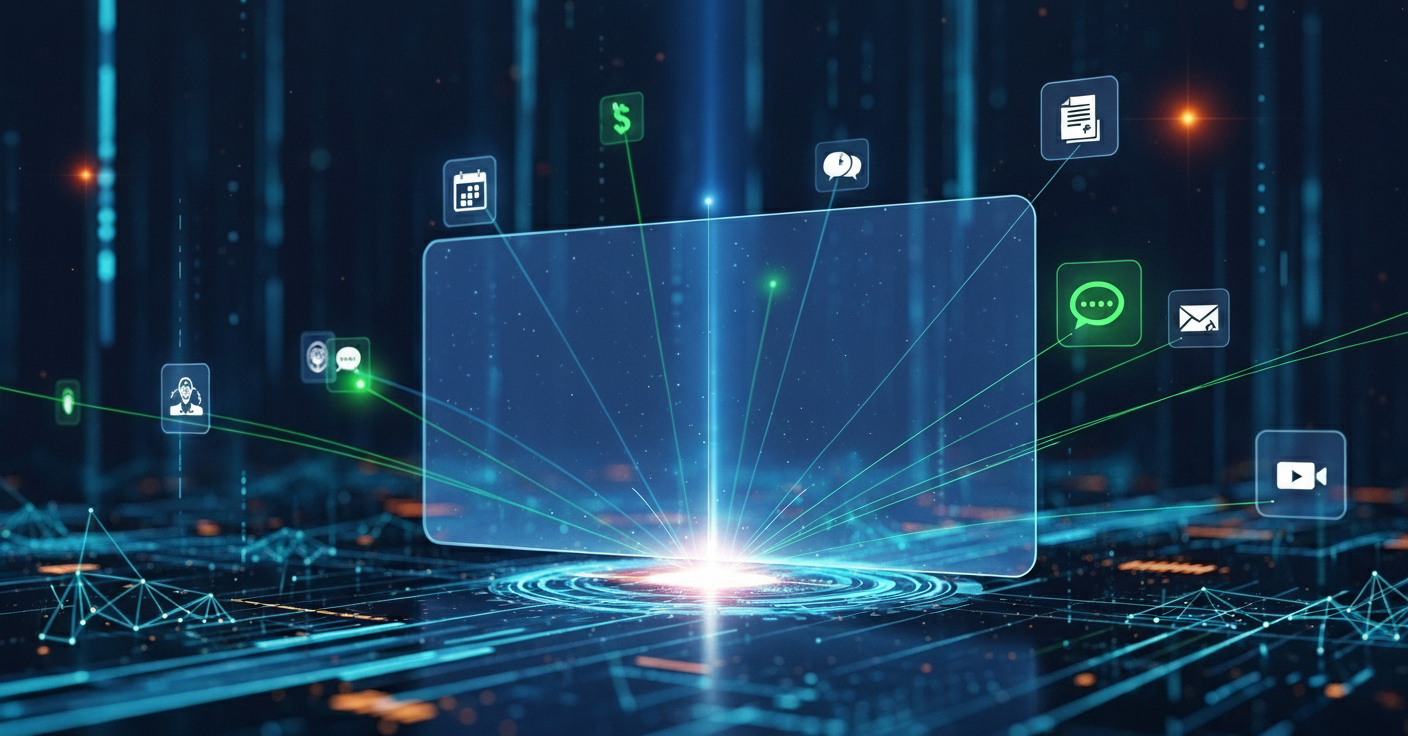SOA OS23 and the Future of Digital Architecture Compliance
Table of Contents
Technology is changing faster than ever. As new systems, apps, and digital services are built, they need to follow clear rules. That’s where SOA OS23 comes in. SOA OS23 isn’t just another tech update. It’s a major step forward in keeping digital systems organized, secure, and compliant. This modern operating standard helps businesses follow digital architecture rules while staying flexible and ready for the future. Whether you work in IT, manage a team, develop apps, or handle data, understanding SOA OS23 is more important than ever. It helps digital teams stay on the same page and build systems that are fast, safe, stable and easy to update. In this guide, we’ll walk you through what SOA OS23 is, why it matters, where it fits in modern digital architecture, and how it helps with compliance and security. You don’t have to be a tech expert to get it. We’re breaking it all down in simple words to help you see the future—and stay ahead of it. Let’s explore the new world of SOA OS23 and why companies everywhere are paying attention.
What Is SOA OS23?
SOA OS23 stands for Service-Oriented Architecture Operating Standard 2023. It’s a digital framework, or guideline, that helps developers and businesses organize how their systems, services, and software work together. Think of it like a rulebook for building smart digital cities—where everything is connected, secure, and efficient. SOA OS23 focuses on how different services talk to each other. Instead of one big heavy program, systems now use smaller services to handle tasks. SOA OS23 helps those services stay in sync, follow policies, and remain compliant with newer data rules. It gives system architects better tools to plan, connect, and manage large IT networks, while also keeping them safe and ready to scale.
Why SOA OS23 Matters in Today’s World
Today, every business is digital. From tiny start-ups to huge banks—everyone relies on computer programs, apps, and data. If systems don’t work well together or break compliance rules, trouble happens. That’s why SOA OS23 is a big deal. It helps teams follow the right standards so everything runs smoothly. With this type of architecture, companies can move faster, fix problems easier, and keep customer data safe. As more laws (like GDPR or HIPAA) require better digital management, SOA OS23 offers a practical solution. Businesses can use it to stay compliant while still growing, updating, and connecting their tools and services.
How SOA OS23 Supports Digital Architecture Compliance
Digital architecture compliance means building your system in a way that follows industry rules. SOA OS23 makes this easier. It includes built-in guidelines for how each part of your system should behave. For example, it outlines how data is shared, how users are verified, and how systems log important steps. The SOA OS23 model also checks for vulnerabilities, helps manage permissions, and makes sure systems don’t “talk” to each other in unsafe ways. This means fewer headaches when it’s time for audits or inspections. SOA OS23 helps businesses avoid data leaks, meet industry rules, and safely grow their digital systems.
Key Principles Behind SOA OS23

SOA OS23 is based on a few simple but powerful rules. The first is loose coupling. That means different services work independently but still communicate well. If one part breaks, the whole system doesn’t crash. Second is reusability. With SOA OS23, one service can be used in many places—saving time and cost. Third is interoperability. All services, even if built on different systems, must understand and work well with each other. Fourth is governance. SOA OS23 sets rules for design, development, and use—so everything stays under control. These four ideas keep businesses flexible but consistent, modern but secure.
Benefits of Using SOA OS23 for Business
Using SOA OS23 helps businesses move faster, reduce risk, and stay future-ready. One major benefit is scalability. Need to grow or add features? With SOA OS23, new parts can be plugged into your system without breaking the old ones. Another benefit is better security. Since every connection is tracked and checked, it’s harder for hackers to sneak in. Plus, SOA OS23 supports easier updates, smoother data sharing, and clearer user roles. Businesses can also reduce downtime with better system recovery and reporting tools. Whether you’re running a global bank or a small web service, SOA OS23 gives your digital system a strong foundation to build on.
SOA OS23 vs. Traditional Systems
Before SOA OS23, many systems were built as one big block—called “monoliths.” In these systems, all parts are combined. If one part fails, the whole thing can go down. Updating just one feature often means rebuilding the entire system. SOA OS23 changes that. Its modular design breaks services into smaller blocks that work independently. That means they can be tested, updated, or reused without breaking anything else. Think of it like building with Legos instead of pouring concrete. This makes modern systems easier to scale and safer to fix. SOA OS23 helps companies transition from “old-school” software systems to fast and flexible digital platforms.
Who Should Use SOA OS23?
Almost anyone building systems can benefit from SOA OS23. It’s great for government teams, healthcare systems, financial institutions, educational platforms, and tech startups. CIOs, IT managers, system architects, and developers all turn to SOA OS23 for clear frameworks and policies. Even compliance officers find it useful because it aligns closely with data protection rules. If your business needs to grow securely, protect data, or improve performance, SOA OS23 offers tools to help. Whether you’re developing a cloud-based app or upgrading an old system, using SOA OS23 ensures that you build smarter, not harder.
Popular Use Cases for SOA OS23
The best way to understand SOA OS23 is to see how people use it. Many banks use it to manage account systems, card processing, customer apps, and fraud detection—all in one connected network. In healthcare, SOA OS23 supports secure patient records, appointment systems, and lab results—even across different platforms. Ecommerce sites use it to connect shopping carts, payment systems, product listings, and user accounts safely. Schools use SOA OS23 to manage student portals, curriculum tools, and attendance. These use cases show that SOA OS23 is not limited to one industry. It works for any digital service, big or small.
How SOA OS23 Works with Cloud Systems
Modern businesses often use cloud services. The good news is that SOA OS23 was designed to work hand-in-hand with the cloud. Whether you’re using Amazon Web Services (AWS), Microsoft Azure, or Google Cloud, SOA OS23 fits right in. It ensures tasks like user login, data handling, backups, and app deployment all follow clear architecture guidelines. Cloud tools often change fast, but SOA OS23 keeps things stable by offering structured frameworks. It tracks your services, secures your APIs, and ensures that everything can scale smoothly in the cloud without causing chaos.
Built-In Tools and Compatibility Features
One of the highlights of SOA OS23 is its ability to connect with other tools. It doesn’t try to replace your favorite apps—it helps them work better. For example, it supports API management platforms, CI/CD tools like Jenkins, logging systems like Splunk, and security platforms like Okta. These tools plug into SOA OS23 through standard connectors, which means developers don’t need to start from scratch. From testing to deployment, SOA OS23 integrates smoothly and helps track the whole lifecycle of your services. It reduces friction between platforms and brings consistency to your digital environment.
Following Standards and Avoiding Pitfalls
When systems grow fast, mistakes happen. Data goes missing, users get locked out, or services fail unexpectedly. SOA OS23 helps prevent those issues by ensuring everyone follows the same design standards. These standards apply to things like naming services, setting user roles, handling data, and building secure connections. With clear policies, teams avoid messy code, unclear processes, or poor tracking. SOA OS23 helps avoid technical debt—the trouble that comes from cutting corners. It’s like building roads with clear safety codes rather than just painting lines on gravel. That makes compliance easier and digital systems stronger.
FAQs
1. What does SOA OS23 stand for?
SOA OS23 means Service-Oriented Architecture Operating Standard 2023. It’s a framework for building smart and secure digital systems.
2. Is SOA OS23 only for big companies?
No. It’s built for all kinds of teams—from small startups to large banks, hospitals, schools, and beyond.
3. Can SOA OS23 help with digital compliance?
Yes. It includes built-in rules that align with data systems, privacy laws, and audit tools, making compliance easier.
4. What’s the main benefit of SOA OS23?
It creates smarter systems that grow safely, avoid errors, and connect services in a clean, reliable way.
5. Do I need to buy special software to use SOA OS23?
Not always. SOA OS23 is a framework. It works with many tools you may already have, especially cloud and security tools.
6. Is SOA OS23 future-ready?
Yes. It supports modern systems, cloud platforms, and upcoming tech while staying strong on standards and safety.
Final Thoughts
As digital systems grow, so does the need to build smarter, more secure, and more connected services. That’s why SOA OS23 is becoming the gold standard for digital architecture compliance. It brings order to complex systems and helps teams create with confidence. Instead of guessing how to manage services or stay compliant, businesses can follow clear rules, tools, and processes. SOA OS23 is not just for IT experts—it’s for anyone serious about growing with stability. Whether you’re launching an app, upgrading company infrastructure, or just want smoother systems, SOA OS23 can help guide the way. It’s the blueprint for a better digital future—cleaner, safer, and smarter. So take the step forward. Your team—and your systems—will thank you.








Post Comment